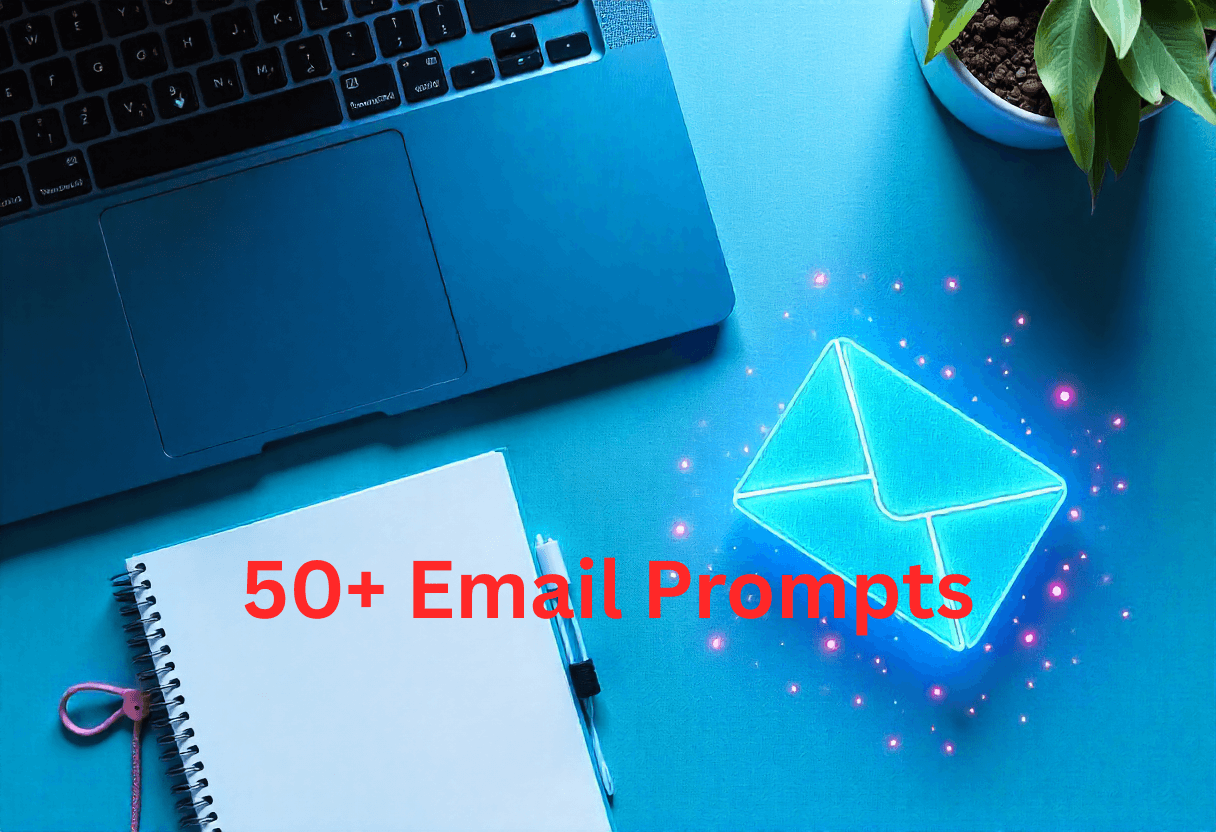
In today’s competitive marketing landscape, connecting with your audience on a personal level is more crucial than ever. Personalization in marketing involves tailoring content and experiences to meet the specific needs and preferences of individual customers. This approach not only enhances customer engagement but also boosts brand loyalty and drives conversions. In this blog post, we’ll delve into the significance of personalization in modern marketing strategies and explore effective techniques for tailoring content to resonate with your audience.
A. Definition of personalization in marketing
Personalization in marketing refers to the practice of crafting tailored content, messages, and experiences for individual consumers or specific audience segments. It involves leveraging data and insights to understand the unique preferences, behaviors, and needs of customers, and then delivering targeted communications and offerings that resonate with them on a personal level. The goal of personalization is to enhance customer engagement, and satisfaction, and ultimately drive conversions by delivering relevant and valuable content that speaks directly to the individual recipient.
B. Importance of personalization in today’s marketing landscape
In today’s hyper-connected and digitally-driven world, consumers are inundated with a constant stream of marketing messages and content. Amidst this noise, personalization emerges as a powerful tool for brands to cut through the clutter and make meaningful connections with their audience. Here are several key reasons why personalization is indispensable in the modern marketing landscape:
Enhanced Customer Experience:
Personalization allows brands to create tailored experiences that cater to the unique preferences and interests of individual customers. By delivering content and offers that are relevant and timely, brands can significantly improve the overall customer experience, fostering stronger relationships and loyalty.
Increased Engagement and Conversion Rates:
Personalized marketing messages are more likely to capture the attention of recipients and resonate with them on a deeper level. This heightened relevance leads to increased engagement with marketing materials and higher conversion rates as customers are more inclined to act on personalized offers that address their specific needs and desires.
Improved Customer Retention:
By demonstrating an understanding of their customer’s preferences and delivering personalized experiences, brands can foster stronger emotional connections and loyalty. Personalization not only helps attract new customers but also plays a crucial role in retaining existing ones by continuously providing value and relevance throughout the customer journey.
Data-Driven Insights:
Personalization relies on data analytics and insights to understand customer behaviors, preferences, and purchasing patterns. By leveraging this data effectively, brands can gain valuable insights into their audience, enabling them to refine their marketing strategies, optimize campaigns, and make data-driven decisions to drive business growth.
Competitive Advantage:
In a crowded marketplace, personalized marketing sets brands apart from competitors by demonstrating a commitment to understanding and meeting the individual needs of customers. Brands that excel at personalization can differentiate themselves and stand out in the minds of consumers, ultimately gaining a competitive edge and driving business success.
C. Overview of the benefits of tailoring content for specific audiences
Tailoring content for specific audiences offers a multitude of benefits that directly impact the effectiveness and success of marketing efforts. Here’s a comprehensive overview of these advantages:
Increased Relevance:
By customizing content to match the interests, preferences, and needs of specific audience segments, brands can ensure that their messaging resonates with recipients on a personal level. This heightened relevance leads to greater engagement and a stronger connection with the target audience.
Higher Engagement Rates:
Tailored content is more likely to capture the attention of recipients and encourage them to interact with marketing materials. Whether it’s personalized emails, targeted social media posts, or customized website content, content that speaks directly to the recipient’s interests and concerns elicits a higher level of engagement, including clicks, likes, shares, and comments.
Improved Conversion Rates:
When content is tailored to address the unique pain points and motivations of specific audience segments, it becomes more persuasive and compelling. As a result, personalized marketing messages have been shown to generate higher conversion rates, whether the desired action is making a purchase, signing up for a newsletter, or completing a form.
Enhanced Customer Satisfaction:
Tailoring content demonstrates a brand’s attentiveness to its customers’ individual preferences and needs, leading to greater satisfaction and loyalty. When customers receive personalized recommendations, promotions, or content that aligns with their interests, they are more likely to feel valued and appreciated, fostering a positive relationship with the brand.
Greater Customer Retention:
Personalized content plays a crucial role in nurturing long-term relationships with customers. By consistently delivering relevant and valuable content tailored to their evolving needs, brands can increase customer satisfaction and loyalty, reducing churn and maximizing customer lifetime value.
Optimized Marketing Spend:
Targeting specific audience segments with tailored content allows brands to allocate their marketing resources more effectively. Instead of broadcasting generic messages to a broad audience, personalized marketing enables brands to focus their efforts on reaching the most relevant prospects, resulting in a higher return on investment (ROI) and improved marketing efficiency.
Valuable Insights and Feedback:
Tailoring content requires a deep understanding of audience preferences, behaviors, and motivations, which necessitates ongoing data analysis and audience research. By gathering insights from personalized marketing campaigns, brands can gain valuable feedback about their audience’s preferences, allowing them to refine their targeting strategies and improve future marketing efforts.
Understanding Your Audience
A. Conducting market research
1. Demographic analysis
This involves gathering data on key demographic variables such as age, gender, income, education level, geographic location, and household size. Understanding the demographic composition of your target audience helps tailor marketing strategies and messaging to better resonate with specific demographic segments.
2. Psychographic analysis
Psychographic analysis delves into the psychological characteristics, values, attitudes, interests, and lifestyles of your audience. By gaining insights into their beliefs, motivations, and preferences, brands can create content and messaging that align with their audience’s psychographic profiles, resulting in more impactful and resonant marketing campaigns.
3. Behavioral analysis
Behavioral analysis focuses on understanding the actions, behaviors, and interactions of your audience with your brand, products, and marketing channels. This includes analyzing purchase history, browsing behavior, engagement with marketing campaigns, and response to promotions. By identifying patterns and trends in consumer behavior, brands can optimize their marketing strategies and deliver personalized experiences that cater to individual preferences and needs.
B. Utilizing data analytics tools to gather insights
Data analytics tools play a crucial role in collecting, analyzing, and interpreting data to gain actionable insights into audience behavior and preferences. These tools enable marketers to track website traffic, monitor social media engagement, analyze email open rates and click-through rates, and measure the effectiveness of various marketing campaigns. By harnessing the power of data analytics, brands can make informed decisions, optimize marketing efforts, and drive better results.
C. Creating buyer personas
Buyer personas are fictional representations of ideal customers based on demographic, psychographic, and behavioral data. They help humanize the target audience and provide a deeper understanding of their needs, challenges, goals, and preferences. Creating detailed buyer personas allows marketers to tailor their messaging, content, and offers to address the specific pain points and motivations of different customer segments. By aligning marketing strategies with the needs and preferences of buyer personas, brands can enhance customer engagement, improve conversion rates, and drive business growth.
Strategies for Personalized Content
A. Dynamic content creation
1. Customizing email campaigns
Tailoring email content based on recipient preferences, behaviors, and past interactions can significantly improve engagement and conversion rates. Dynamic email content may include personalized subject lines, product recommendations, and targeted offers tailored to individual interests and purchase history.
2. Website personalization
Implementing website personalization involves delivering customized content, recommendations, and offers to visitors based on their browsing behavior, geographic location, and previous interactions with the site. This may include dynamic landing pages, personalized product recommendations, and tailored messaging to enhance the user experience and drive conversions.
B. Utilizing AI and machine learning algorithms
1. Predictive analytics for personalized recommendations
By analyzing past behavior and preferences, predictive analytics algorithms can anticipate future actions and provide personalized product recommendations to individual customers. These recommendations are based on factors such as purchase history, browsing behavior, and similarities with other customers, enabling brands to deliver relevant and timely offers that resonate with each customer’s unique preferences.
2. Chatbots for real-time personalization
Chatbots powered by AI and natural language processing technologies can engage with customers in real time, providing personalized assistance, recommendations, and support. By leveraging data from previous interactions and customer profiles, chatbots can deliver tailored responses and recommendations, enhancing the customer experience and driving engagement.
C. Personalized advertising
1. Targeted social media ads
Social media platforms offer robust targeting options that allow brands to deliver personalized ads to specific audience segments based on demographics, interests, and behaviors. By tailoring ad content and creative elements to resonate with the preferences and interests of target audiences, brands can increase ad relevance, engagement, and conversion rates.
2. Programmatic advertising
Programmatic advertising uses algorithms and data-driven insights to automate the process of buying and placing digital ads in real time. Through programmatic advertising platforms, brands can leverage audience data and targeting parameters to deliver personalized ads across various digital channels, including display, video, and mobile. This enables brands to reach the right audience with the right message at the right time, optimizing ad performance and maximizing ROI.
Implementing Personalization Across Channels
A. Email marketing
1. Segmenting email lists
Segmenting email lists involves dividing subscribers into smaller groups based on criteria such as demographics, purchase history, engagement level, and interests. By segmenting email lists, brands can send targeted campaigns that address the specific needs and preferences of each segment, resulting in higher open rates, click-through rates, and conversions.
2. Personalized subject lines and content
Personalizing email subject lines and content with dynamic elements such as the recipient’s name, location, or past interactions can capture their attention and increase engagement. By delivering relevant and tailored content, brands can make their emails more compelling and persuasive, driving higher conversion rates and fostering stronger customer relationships.
B. Social media marketing
1. Tailoring content for different platforms
Each social media platform has its own unique audience demographics, content formats, and engagement behaviors. Tailoring content to suit the characteristics of each platform ensures that it resonates with the target audience and maximizes engagement. This may involve adapting the tone, style, and format of content to fit the preferences of users on platforms such as Facebook, Instagram, Twitter, LinkedIn, and TikTok.
2. Leveraging user-generated content
User-generated content (UGC) refers to content created and shared by customers, fans, or followers on social media. Incorporating UGC into social media marketing campaigns adds authenticity and credibility to brand messaging while also encouraging engagement and fostering a sense of community. Brands can leverage UGC by reposting customer photos, reviews, testimonials, and stories, thereby amplifying their reach and building brand advocacy.
C. Website personalization
1. Dynamic landing pages
Dynamic landing pages are customized web pages that adapt to the unique characteristics and preferences of individual visitors. By leveraging data such as referral source, geographic location, and browsing history, brands can dynamically adjust the content, offers, and calls-to-action on landing pages to match the interests and needs of each visitor, increasing conversion rates and improving the user experience.
2. Personalized content based on user behavior
Website personalization involves delivering tailored content and recommendations to website visitors based on their behavior, preferences, and past interactions. This may include displaying personalized product recommendations, content suggestions, or promotional offers based on the visitor’s browsing history, search queries, or previous purchases. By providing relevant and timely content, brands can enhance engagement, drive conversions, and create a more personalized browsing experience for users.
Measuring the Effectiveness of Personalization
A. Key performance indicators (KPIs) for personalized campaigns
1. Click-through rate (CTR)
The click-through rate measures the percentage of recipients who clicked on a link or call-to-action (CTA) within a personalized campaign. A high CTR indicates that the content and offers are resonating with the audience, driving engagement and prompting action.
2. Conversion rate
The conversion rate tracks the percentage of recipients who completed a desired action, such as making a purchase, signing up for a newsletter, or filling out a form, as a result of a personalized campaign. A high conversion rate indicates that the campaign effectively persuaded recipients to take the intended action, leading to tangible business outcomes.
3. Customer engagement metrics
Customer engagement metrics, such as time spent on the site, page views, and social media interactions, provide insights into how actively and deeply customers are interacting with personalized content across various channels. By monitoring engagement metrics, brands can gauge the level of interest and involvement generated by personalized campaigns, identifying areas for improvement and optimization.
B. A/B testing for optimization
A/B testing, also known as split testing, involves comparing two versions of a marketing asset, such as an email subject line, website layout, or ad creative, to determine which performs better in terms of key metrics. By conducting A/B tests on personalized campaigns, brands can systematically evaluate different variables and variations to identify the most effective approaches for engaging and converting their target audience. This iterative process of testing and optimization helps refine personalized campaigns, maximizing their impact and effectiveness over time.
C. Analyzing customer feedback and sentiment
Analyzing customer feedback and sentiment involves gathering qualitative data from customer surveys, reviews, social media comments, and other sources to understand how recipients perceive and respond to personalized campaigns. By capturing feedback and sentiment data, brands can gain valuable insights into the strengths and weaknesses of their personalized marketing efforts, identifying areas where improvements can be made to better meet customer expectations and preferences. Additionally, monitoring sentiment trends over time allows brands to track the overall impact and sentiment of personalized campaigns, informing future strategies and initiatives.
Overcoming Challenges and Pitfalls
A. Privacy concerns and data protection regulations
Privacy concerns and data protection regulations present significant challenges for personalized marketing efforts. With increasing awareness of data privacy issues and stringent regulations such as the General Data Protection Regulation (GDPR) and the California Consumer Privacy Act (CCPA), brands must prioritize transparency, consent, and compliance when collecting and processing customer data. By implementing robust data protection measures, providing clear privacy policies, and obtaining explicit consent from customers, brands can build trust and confidence while mitigating the risk of data breaches and regulatory penalties.
B. Avoiding over-personalization
While personalization can enhance customer engagement and satisfaction, there is a risk of over-personalization, where excessive targeting and customization can come across as intrusive or creepy to recipients. Brands must strike the right balance between personalization and privacy, respecting boundaries and preferences while delivering relevant and valuable content. To avoid over-personalization, brands can leverage preference centers, allow customers to control their data and preferences, and use discretion when applying personalization tactics to ensure a positive and respectful customer experience.
C. Balancing personalization with brand consistency
Maintaining brand consistency across personalized marketing efforts can be challenging, especially when tailoring content and messaging to different audience segments or channels. While personalization allows for customization and flexibility, brands must ensure that personalized content aligns with their brand identity, values, and messaging guidelines. Consistency in tone, voice, and visual branding helps reinforce brand recognition and trust, ensuring a cohesive and unified brand experience across all touchpoints. By establishing clear brand guidelines and providing training and support to marketing teams, brands can maintain consistency while embracing the benefits of personalization.
Case Studies and Examples
A. Successful implementations of personalized marketing strategies
Netflix:
Netflix utilizes sophisticated algorithms to personalize the user experience and recommend content based on viewing history, preferences, and behavior. By analyzing data on past viewing habits and interactions, Netflix delivers personalized recommendations that cater to individual tastes, leading to increased user engagement and retention.
Amazon:
Amazon’s personalized recommendation engine analyzes customer browsing and purchase history to suggest products that align with their interests and preferences. Through features like “Recommended for You” and “Frequently Bought Together,” Amazon provides a highly tailored shopping experience, driving upsells, cross-sells, and repeat purchases.
Spotify:
Spotify leverages user data and listening habits to curate personalized playlists, such as Discover Weekly and Release Radar, featuring music recommendations tailored to each user’s tastes and preferences. By delivering a personalized music discovery experience, Spotify enhances user engagement and loyalty, driving retention and subscription renewals.
B. Lessons learned from failed attempts at personalization
Pepsi’s “PepsiMoji” Campaign:
In an attempt to capitalize on the trend of emoji usage, Pepsi launched a campaign featuring emoji-themed labels on its soda cans. However, the campaign failed to resonate with consumers due to its lack of personalization and relevance to their preferences. Instead of focusing on genuine consumer insights, Pepsi relied on a superficial trend, resulting in a disconnect with its audience and lackluster sales.
Target’s Pregnancy Prediction Algorithm:
Target faced backlash after its personalized marketing algorithm inadvertently revealed a teenage girl’s pregnancy to her family through targeted advertising. The incident underscored the importance of sensitivity and discretion when leveraging personal data for marketing purposes. Target learned the importance of balancing personalization with privacy considerations and the potential risks of overstepping boundaries.
Facebook’s Beacon Program:
Facebook’s Beacon program, which automatically shared user activity and purchases on external websites with friends, faced criticism and legal challenges for privacy violations. The program demonstrated the risks of invasive personalization tactics and the importance of obtaining explicit consent and providing opt-out options for users. Facebook ultimately discontinued the Beacon program and implemented stricter privacy controls in response to user concerns.
Future Trends in Personalized Marketing
A. Advancements in AI and machine learning
As technology continues to evolve, advancements in artificial intelligence (AI) and machine learning are poised to revolutionize personalized marketing. AI-powered algorithms can analyze vast amounts of data in real time, enabling brands to uncover deeper insights into customer behavior and preferences. These insights can then be used to deliver hyper-targeted content, recommendations, and experiences across multiple channels, enhancing engagement and driving conversions.
B. Hyper-personalization through advanced data analysis techniques
Hyper-personalization goes beyond traditional segmentation and targeting by delivering individualized experiences tailored to each customer’s unique preferences, behaviors, and context. Advanced data analysis techniques, such as predictive analytics, natural language processing, and sentiment analysis, enable brands to gain a deeper understanding of customer intent and sentiment in real time. By leveraging these insights, brands can personalize content, offers, and interactions at a granular level, creating highly relevant and personalized experiences that resonate with customers on a personal level.
C. The role of personalization in the era of privacy-first marketing
In an era of increasing privacy concerns and regulatory scrutiny, the role of personalization in marketing is evolving to prioritize consumer privacy and data protection. Brands are shifting towards privacy-first marketing approaches that prioritize transparency, consent, and data protection principles. This involves implementing robust data privacy policies, obtaining explicit consent for data collection and personalization, and providing users with greater control over their data and preferences. By prioritizing consumer privacy and building trust through responsible data practices, brands can continue to harness the power of personalization while respecting consumer rights and preferences.
Conclusion
Personalization in marketing is not just a trend but a strategic imperative in today’s highly competitive and rapidly evolving landscape. By tailoring content, offers, and experiences to the individual preferences and needs of customers, brands can forge deeper connections, drive meaningful engagements, and ultimately achieve greater success.
As highlighted in this blog post, implementing personalized marketing strategies requires a deep understanding of the target audience, leveraging advanced technologies such as AI and machine learning, and navigating privacy considerations in a privacy-first marketing era. By overcoming challenges such as privacy concerns and avoiding pitfalls such as over-personalization, brands can unlock the full potential of personalized marketing to drive business growth and build lasting relationships with customers.
Looking ahead, future trends in personalized marketing will continue to be shaped by advancements in AI and machine learning, the rise of hyper-personalization through advanced data analysis techniques, and the evolving role of personalization in the context of privacy-first marketing practices. By embracing these trends and staying ahead of the curve, brands can continue to deliver personalized experiences that resonate with customers and drive competitive advantage in the digital age.






